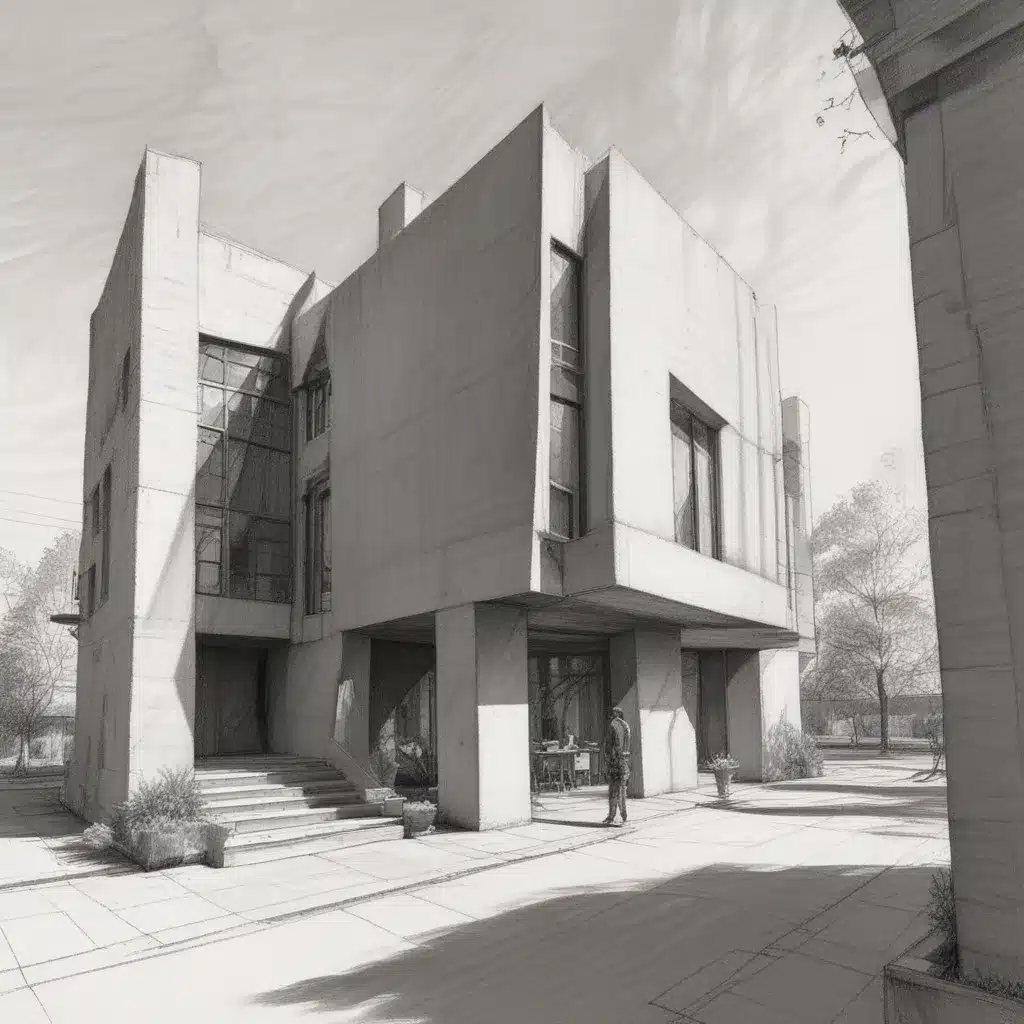
As an experienced art writer and creative consultant for Pencil and Paint Muse, I’m thrilled to share my insights on the captivating world of architectural sketching. In this comprehensive article, we’ll delve into innovative techniques for harnessing the power of dramatic shadows to breathe life into your pencil drawings.
Mastering the Interplay of Light and Shadow
Capturing the essence of architectural forms through pencil sketching is a delicate balance of understanding light logic and the intricate dance of shadows. Whether you’re rendering a striking cityscape, a grand historic building, or an abstract futuristic structure, the way you handle light and shade can make or break your artistic vision.
One of the most common challenges faced by emerging artists is the struggle to achieve a true sense of three-dimensionality in their drawings. Often, the culprit is not a lack of technical prowess, but rather a misunderstanding of how light and shadow interact with the subject matter.
As Will Kemp insightfully explains, “If line drawing creates the proportions, handling of tone creates the form.” By mastering the principles of cast shadows, form shadows, and reflected light, you can unlock the secret to imbuing your architectural sketches with a profound sense of depth and solidity.
Harnessing the Power of Chiaroscuro
The Italian term “chiaroscuro” refers to the dramatic interplay of light and dark, a technique famously employed by masters like Rembrandt and Caravaggio. In the realm of architectural sketching, this approach can be a powerful tool for conveying the grandeur and tension of your subject matter.
Begin by identifying the primary light source in your scene. This could be the sun, a window, or an artificial light fixture. Observe how the light hits the various surfaces, casting sharp-edged cast shadows and soft, diffused form shadows. Pay close attention to the subtle gradations of tone, from the crisp highlights to the deep shadow cores.
Experiment with exaggerating these contrasts, using bold strokes and deep shadows to create a sense of sculptural form and architectural drama. Embrace the interplay of light and dark, allowing for areas of stark contrast to balance with softer, more gradual transitions.
Pushing the Boundaries of Pencil Sketching
While traditional pencil techniques can be a powerful tool for architectural sketching, don’t be afraid to push the boundaries of the medium. Experiment with a range of pencils, from delicate 2H leads to bold 6B sticks, to achieve a diverse array of marks and textures.
Incorporate mixed media elements, such as ink washes, charcoal, or even a touch of gouache or acrylic, to heighten the drama and expressiveness of your drawings. These additional materials can be used to emphasize shadows, enhance details, or introduce unexpected pops of light and color.
Playfully explore stylized approaches, drawing inspiration from the angular geometries of architectural expressionism, the atmospheric haze of impressionistic cityscapes, or the surreal, dreamlike qualities of surrealist compositions. By embracing a variety of techniques and artistic styles, you can develop a unique visual language that sets your architectural sketches apart.
Capturing the Essence of Movement and Atmosphere
Architectural sketching is not just about rendering static forms; it’s also about conveying a sense of dynamism and atmosphere. Consider how the shadows shift and elongate throughout the day, altering the mood and character of your subject matter.
Experiment with gestural lines and fluid strokes to suggest the flow of pedestrians, the sway of trees, or the billowing of curtains in the wind. Incorporate atmospheric effects, such as mist, rain, or fog, to imbue your drawings with a sense of mystery and drama.
By embracing the ephemeral nature of light and shadow, you can create architectural sketches that not only capture the physical structure but also evoke the emotional resonance and lived experience of the space.
Communicating Design Intent through Sketching
Architectural sketching is not just an artistic pursuit; it’s also a powerful tool for communicating design ideas and visually conveying a project’s intent. Whether you’re a practicing architect, a student, or a designer, mastering the art of architectural sketching can be a valuable asset in your creative toolkit.
Develop a repertoire of narrative sketching techniques, using a combination of perspective drawings, axonometric projections, and detail studies to tell a compelling story about your design. Experiment with different presentation formats, from loose, expressive sketchbook pages to highly polished, technical illustrations.
By leveraging the expressive potential of pencil drawings and strategic use of shadows, you can create architectural sketches that not only showcase your technical prowess but also effectively communicate your creative vision and design intent to clients, stakeholders, and collaborators.
Conclusion
Architectural sketching is a dynamic and multifaceted art form that demands a deep understanding of light, shadow, and form. By mastering the interplay of chiaroscuro, experimenting with diverse media and techniques, and capturing the essence of movement and atmosphere, you can elevate your architectural drawings to new heights of expressiveness and communication.
As you continue to hone your skills and explore the boundless possibilities of pencil sketching, remember to embrace the creative process, stay open to experimentation, and trust your intuitive vision. With each drawing, you’ll uncover new ways to breathe life into your architectural subjects and share your unique artistic perspective with the world.
Ready to take your architectural sketching to the next level? Dive into the wealth of resources available on Pencil and Paint Muse and immerse yourself in the captivating realm of pencil-based artistic expression.
Tip: Experiment with different media to discover your unique style